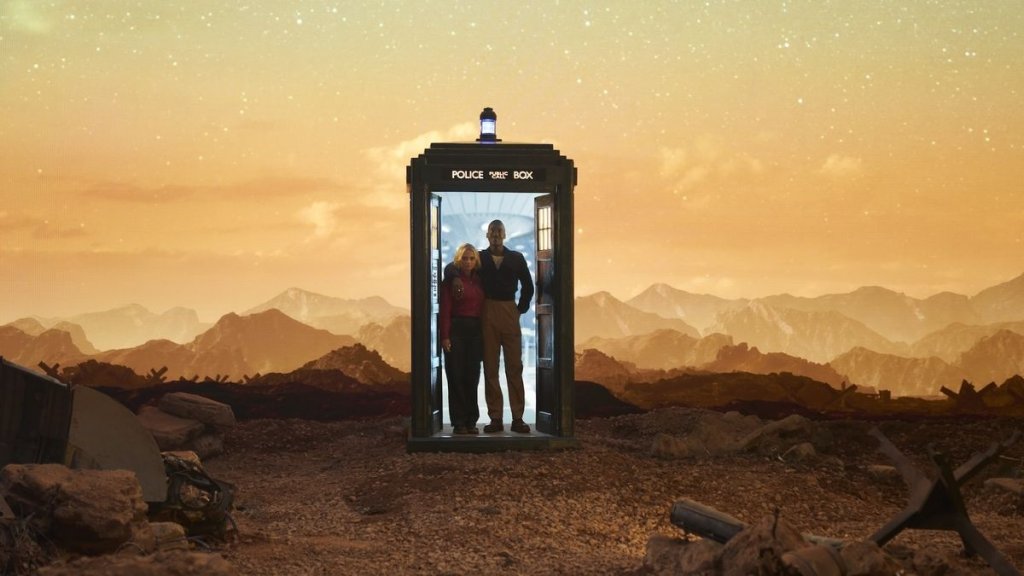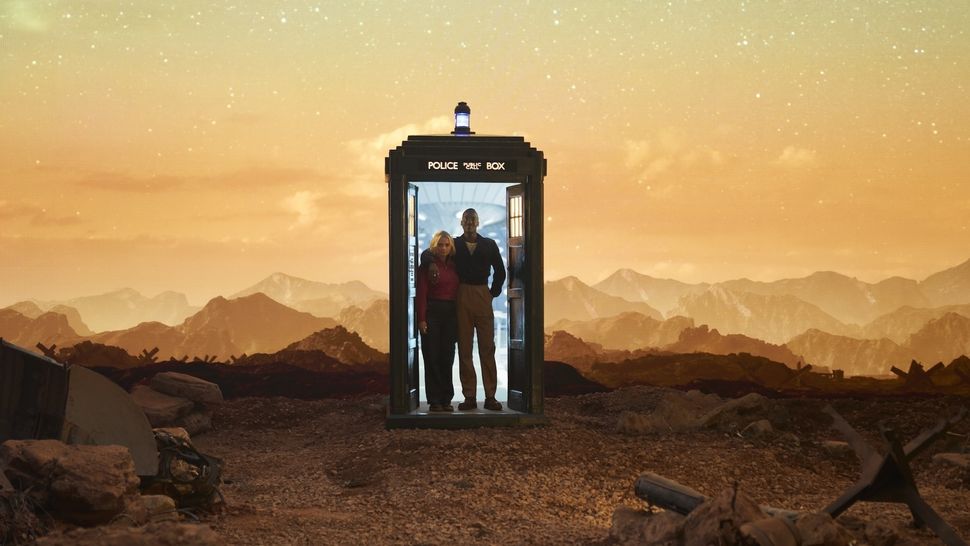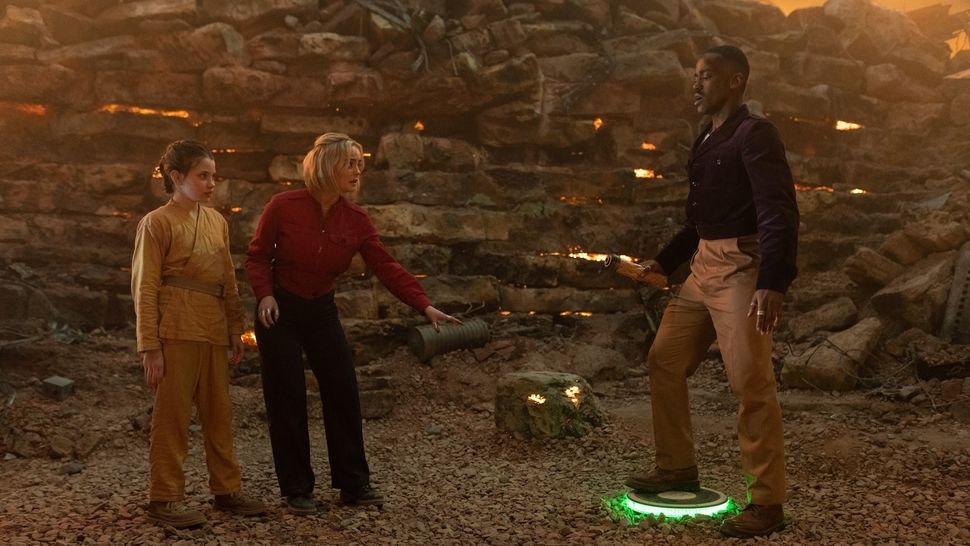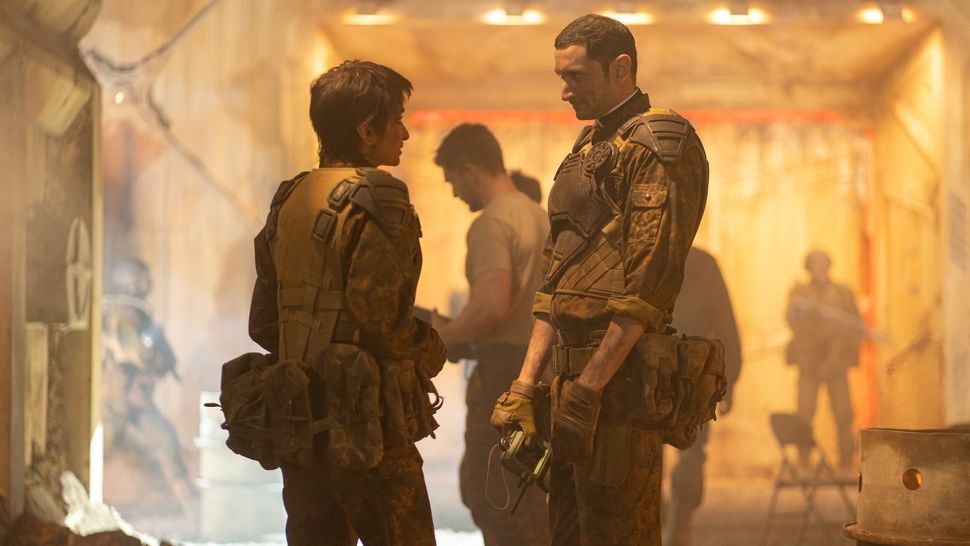
Doctor Who ‘Boom’: Who are the marines really fighting on Kastarion 3? (Image Credit: Space.com)
Former “Doctor Who” showrunner Steven Moffat returns to the show to write episode 3 of the Fifteenth Doctor’s first full season and, as you’d expect, it’s a typically high-concept story.
In “Boom”, Moffat — the man behind classic adventures like “The Girl in the Fireplace,” “Blink” and “Heaven Sent” — takes the TARDIS to a war zone, and ensures that the Doctor has to spend the entire episode (more or less) with his foot on a sophisticated landmine.
It’s not the first time such a fate has befallen the Time Lord (Ncuti Gatwa portrays the Fifteenth Doctor), but escape was much easier in classic Tom Baker serial “Genesis of the Daleks” (1975). And at least on the Dalek home world of Skaro it was easy to tell who was fighting who — a luxury the Doctor’s not afforded in the weird forever war of Kastarion 3. Check out our Doctor Who streaming guide for tips on how to watch the Fifteenth Doctor’s first season.
Has the Doctor encountered the Anglican Marines before?

Yes, the military branch of “the Church” — also known as the “Church of the Papal Mainframe” — was introduced early on in Steven Moffat’s tenure as “Doctor Who” showrunner, which ran from 2010 to 2017.
These 51st century warrior Clerics (ranks in the organization include Bishop and Verger, as well as the more blatantly militaristic Colonel) made their first appearance in Weeping Angels two-parter “The Time of Angels”/”Flesh and Stone” (2010). They went on to become a regular fixture during the Eleventh Doctor Matt Smith’s stint in the TARDIS (2010-2013).
Why have these ordained soldiers been deployed to Kastarion 3?

They’re supposedly fighting an ongoing war against the Kastarions, though they’ve never actually sighted the enemy. Some speculate that they’re made of fog, while others believe that they lurk in the mud.
The truth, however, is much more sinister.
Related: 5 actors who nearly played Doctor Who
Who are the real enemies in ‘Boom’?

Maybe the unexploded landmine under his foot is taking all his concentration, but it doesn’t take long for the Doctor to work out there are no Kastarions.
Instead, it turns out that the amoral weapons manufacturers of the Villengard Corporation have manipulated the Anglican Marines into declaring war on an empty planet — and they’re doing everything they can to perpetuate a forever war in order to boost profits.
Related: The greatest Doctor Who villains ranked
How are they keeping the war going?

In a scenario where “Life is cheap, patients are expensive”, it’s all about “the Villengard algorithm.”
“Villengard battle products are fitted with AI,” the Doctor explains. “The algorithm maintains a fighting force at just above the acceptable number of casualties — keeps you fighting, keeps you dying, keeps you buying. Medical services optimize the casualty rate for continued conflict. War is business, and business is booming.” Literally.
Automated ambulance units patrol the battlefield looking for combat, and dollar signs are their main barometer for deciding whether a patient should live or die. So even though the prognosis for Anglican Marine John Francis Vater (Joe Anderson) is good — he’s expected to make a full recovery in just four weeks — this is deemed unacceptable by the algorithm, and he is subsequently terminated.
As the AI reincarnation of Vater later puts it, “My recovery was estimated as beyond acceptable parameters for a conflict as budgeted.”
Where is Villengard?
Villengard is a planet at the center of the universe. It was first mentioned in Ninth Doctor (Christopher Eccleston) two-parter “The Empty Child”/”The Doctor Dances” (2005) — a story written by a certain Steven Moffat. In 1940s London, the Doctor recognizes that Captain Jack Harkness’s Sonic Blaster came from the weapons factories of Villengard, and reveals that he went there. Once.
“They’re gone now,” Jack said. “Destroyed. Main reactor went critical. Vaporized the lot.”
“Like I said. Once,” answered the Doctor, with an unmistakable glint in his eye.
Two versions of the Doctor later visited the ruins of Villengard on screen, when Twelfth Doctor Peter Capaldi teamed up with the First Doctor (now played by David Bradley) in “Twice Upon a Time” (2017).
Are there any familiar faces among the soldiers?

Not yet, perhaps, but one member of the “Boom” cast will soon be very famous in “Doctor Who” circles.
Anglican Marine Mundy Flynn is played by Varada Sethu (“Star Wars: Andor”), who was announced as the next “Who” companion in April this year. As we weren’t expecting to see her on screen until next year, her appearance on Kastarion 3 was something of a surprise.
Related: Doctor Who companions ranked worst to best
“She’s coming in into season 2,” said showrunner Russell T. Davies on documentary show “Doctor Who: Unleashed.” “But quite how that happens, what happens, why it happens, it’s very much knitted into the story of the Doctor and the story of [current companion] Ruby Sunday.”
However, Sethu’s return is unlikely to be as simple as the Doctor and Ruby bumping into Mundy on some alien world. Since the timey-wimey arcs of Amy Pond’s “Girl Who Waited” and Clara Oswald’s “Impossible Girl,” the origin stories of the Doctor’s companions have become nearly as complex as his own. Expect something similarly weird to be true of Mundy Flynn — or whoever Sethu’s new companion turns out to be.
“Doctor Who” streams on BBC iPlayer in the UK and Disney Plus elsewhere in the world. New episodes debut at 7pm ET/4pm PT on Fridays, and midnight on Saturdays in the UK. Our guide to watching new “Doctor Who” episodes explains more.








